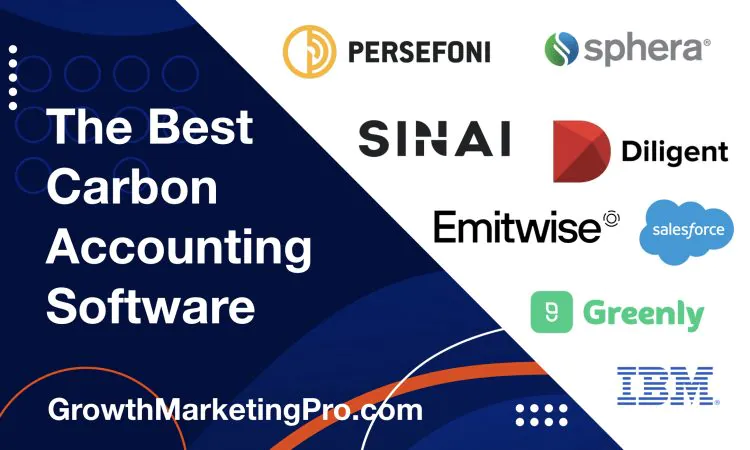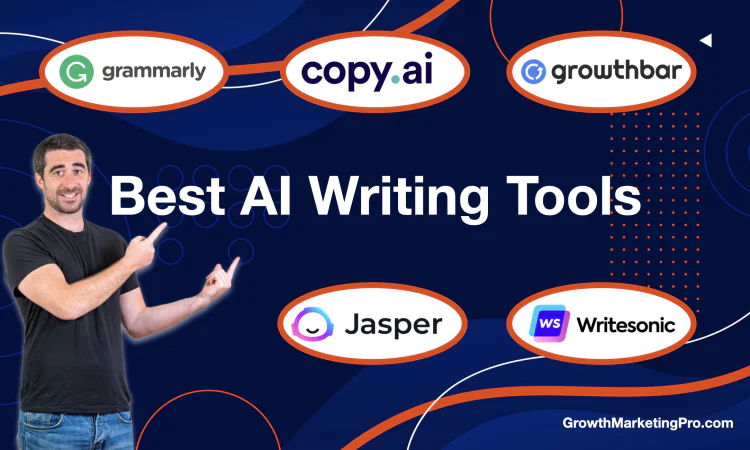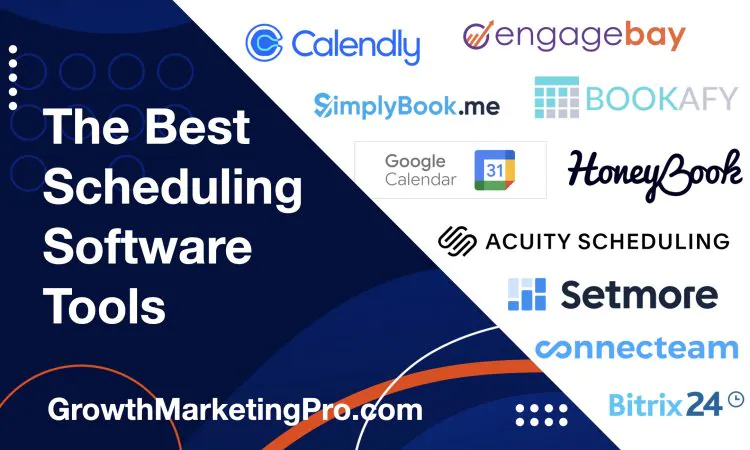- How to Grow a SaaS (Software) Business FAST - February 10, 2025
- 6 Advanced SEO Tips to Dominate the Search Rankings in 2025: Informed by Our Biggest Clients - January 17, 2025
- 7 Advanced Tips for Companies Spending $1M+ on Google Ads - December 10, 2024
As climate change accelerates, manual carbon accounting is no longer a viable option.
Demand for digitized solutions is on an upward trajectory as more organizations around the world report their emissions levels, albeit disparately.
The first step to reduce emissions and move to become carbon neutral is to have a reporting framework in place to know what your emissions are to begin with.
The lack of a standardized way of reporting emissions comes with its own set of downsides. However, establishing a fundamental understanding of what carbon accounting does and how it does it helps make its case an accessible solution to the many carbon reporting issues of today.
Table of Contents
What is carbon accounting software?
Carbon accounting software is designed to help organizations manage and quantify their carbon emissions. With the right GHG emissions software, organizations can accurately track greenhouse data and use it to lower their emissions and lower expenditures.
There’s a distinction between carbon accounting and an ESG (Environmental, Social, and Governance) solution. A carbon accounting solution is the only one managed by a GHG protocol.
It’s important to note that the term “carbon” is used as an all-encompassing term, as deemed by the Greenhouse Gas Protocol, to refer to several types of emissions.
These include:
- Methane
- Nitrous oxide
- Hydrofluorocarbons
- Perfluorochemicals
- Sulfur
- Hexafluoride
Source: EPA.gov
Organizations that invest in carbon accounting software can streamline their carbon footprint disclosure process. Moreover, the information is more easily accessible to stakeholders and companies can use it to properly deal with any compliance issues.
What features to look for in carbon accounting software
A carbon accounting solution’s array of features determines how useful it is to an organization. Emissions regulation is nuanced, meaning it’s often determined by different regional guidelines.
As you vet some of the best carbon accounting software in the space, look for the following features as strong indicators of value and return on investment to help you move toward your reduction targets to become carbon neutral.
Unified auditing: The level of unification and automation of the emissions auditing process matters. It affects reporting and determines how effective your workflows will be. It’s also important to take into account how easy it is to manipulate the auditing process, and what the possible implications of that are.
Industry history: The emissions landscape is evolving fast. Because of this, relevant industry experience matters. Sustainable emissions solutions depend on the founders having industry experience and relevant know-how.
Relevant industry partnerships: Partnerships are a strong indicator of industry knowledge and the ability to cater to current and future climate change and emissions needs. The better a solution’s partnership ecosystem, the better equipped they are to handle applicable solutions.
Reporting and analytics: Working toward carbon reductions takes plenty of detailed analytics. Emissions data collection, benchmark reporting, or energy consumption rates form a critical part of the reporting and analytics features any carbon accounting software should offer.
Personalized support: A worthy carbon accounting solution will provide personalized advice and real-time support according to industry, region, and other specifications. As touched on previously, software features alone are hardly enough for organizations to reach emissions milestones and mitigate expenditures.
The 10 best carbon accounting software
There’s no shortage of vendors in the carbon emissions space. However, not all of them are built equally, and some lend themselves to particular accounting needs much better than other competitors.
Here’s our list of the top ten worth vetting.
1. Persefoni
Persefoni is scalable and it’s built to uphold the transparency and accountability emissions practices that many Fortune 500 organizations are using to their advantage.
Based in the United States, Persefoni works exceptionally well for asset managers and multinational companies that need financial reporting as well as robust accounting automation. As a five-star vendor in the market, Persefoni stands as a leader in the carbon management space due to its unrivaled industry experience.
Additionally, its Advisory Board is made up of global industry leaders who are actively involved in the outlining of proper disclosure standards. As carbon accounting software platform, Persefoni serves both enterprise and SMB markets.
In an effort to democratize access to emissions control with a standardized approach, Persefoni boasts strategic relationships with industry leaders like:
- Bain
- Workiva
- CGI
- Patch
This makes it one of the more comprehensive emissions solutions organizations can onboard for a clearer outlook on their emissions control efforts.
2. IBM Environmental Intelligence Suite
A large part of IBM’s Environmental Intelligence Suite offering is focused on risk analysis and response efforts. Its features aim to operationalize carbon accounting data and monitor for disruptive climate conditions.
IBM’s acquisition of Envizi comes together to form the IBM Environmental Intelligence Suite as mostly legacy software aimed at managing swaths of data. As an emissions management software, it offers basic climate risk analytics with the help of its AI capabilities. Organizations concerned with future-oriented climate mitigation efforts may find value in IBM’s suite of emissions control solutions.
3. Sphera
Sphera’s emissions management approach focuses on both safety and liability reduction. As a greenhouse management solution, it’s in the business of elevating organizational safety as a way for companies to uphold a positive environmental reputation and build public trust.
Sphera is built to eliminate information silos by centralizing the reporting, data collection, and management tools that equip teams to work on safety and sustainability efforts. Its 2019 acquisition of Thinkstep and its subsequent acquisition by The Blackstone Group implies a greater ability to impact carbon control solutions for organizations.
4. Emitwise
Much like other competitors in the space, Emitwise offers a centralized data management solution for teams to get a handle on their carbon agenda. Emitwise provides access to compliance-ready data, commercial insights, and plenty of reporting. It focuses on solving carbon emissions generated through an organization’s supply chain.
Automated technology and live carbon accountants ready to offer support provide a well-rounded approach to emissions control. End-to-end visibility, as well as machine learning capabilities, set it apart from other, more basic accounting software.
5. Sinai Technologies
Sinai Technologies empowers its customers through its modeling and planning capabilities. Whether organizations opt for a solution like Sinai Technologies depends largely on the number of resources they’re willing to invest.
Its suite of tools and functionalities may not be as accessible as other alternatives. Yet its limited features might not be a relevant downside if organizations are invested in a decarbonization-led approach.
6. Net Zero Cloud by Salesforce
Net Zero Cloud comes with a robust list of partners like Accenture and several others in the enterprise space. Though there have been mixed reports on the overall scalability of the tool, its dashboard functionality is hard to beat.
Net Zero Cloud, owned by Salesforce, is an emissions accounting product built on Salesforce’s automation, language support, and integrations features. This can be a strength and lends itself to useful emissions reporting features, but it also comes with its limitations due to its reliance on Salesforce’s existing data schema, which wasn’t built for accounting.
7. Diligent
U.S.-based Diligent was founded in 1994 and is designed for executives, board members, government organizations, and nonprofits to share and collaborate on emissions initiatives.
Diligent focuses on strengthening governance by unifying risk, compliance, cost savings, and auditing in a single platform. It also provides climate leadership certification, sustainability and ESG reporting, and compliance management tools. Still, it may leave a lot to be desired for some organizations in terms of carbon emissions calculations and performance monitoring.
8. Greenly
Greenly focuses on carbon tracking solutions for small to medium businesses. The automation and integration of data analysis with third-party solutions help clients reduce their greenhouse gas emissions.
However, Greenly may not deliver on enterprise-grade accounting needs, as its scalability is limited and caters primarily to a European audience. Still, it equips SMBs with the ability to calculate emissions across scopes 1,2, and 3 and offers climate expert support when requested.
A unified dashboard helps teams access tools to collect emissions data. It also offers emissions reduction certification as you hit milestones. Companies looking to step into the carbon accounting arena as beginners may find value in a tool like Greenly.
9. Watershed
Watershed was recently founded in 2019 and relies heavily on back-end manual services with basic automation.
As a carbon emissions management tool, its features help measure your footprint, fund carbon removal, and offer progress reports along the way.
Watershed’s workflow is made up of measuring, reducing, removing, and reporting features. Its modeling tools give you an overview of your carbon footprint so that organizations can create investor-ready reports and actionable emissions reduction strategies. When vetting Watershed as a possible solution, consider its limited ability to scale with the growing needs of an organization.
10. Sweep
Sweep focuses on the collaborative features an organization can use to empower its teams to execute emissions initiatives and communicate with stakeholders. It makes task tracking and assigning easy and data is visual and accessible in one centralized system.
However, according to an organization’s specific needs, Sweep may fall short in the fundamental carbon management features that matter. These include sustainability experience, advanced reporting, and the ability to scale.
Yet businesses that need basic emissions accounting management with sensible pricing, Sweep may be an option worth considering.
Carbon accounting software: Beyond the basics
Current and future organizations will need to contend with emissions control and the many challenges it brings along with it. Today, regulations are constantly changing to control climate change.
To help solve this, end-to-end emissions accounting systems now form an integral part of a data-driven solution for growth-oriented organizations.
The number one climate disclosure and carbon management solution can help.




